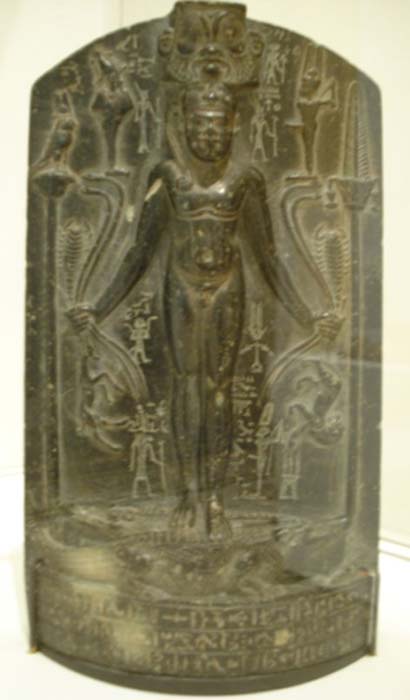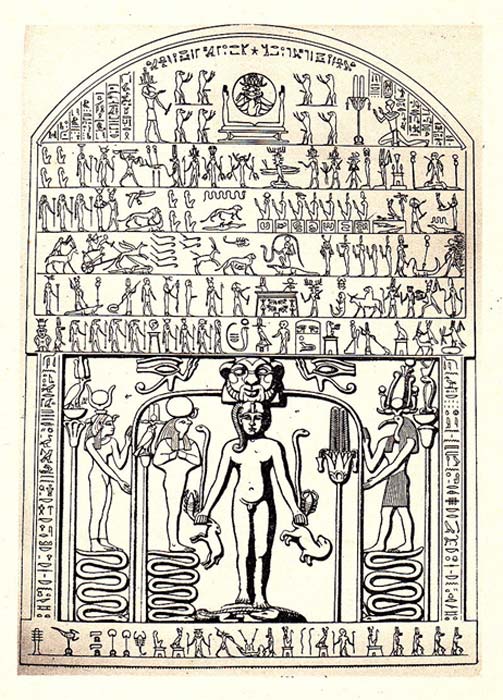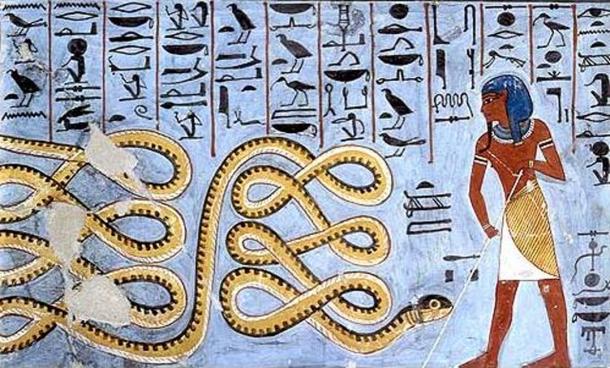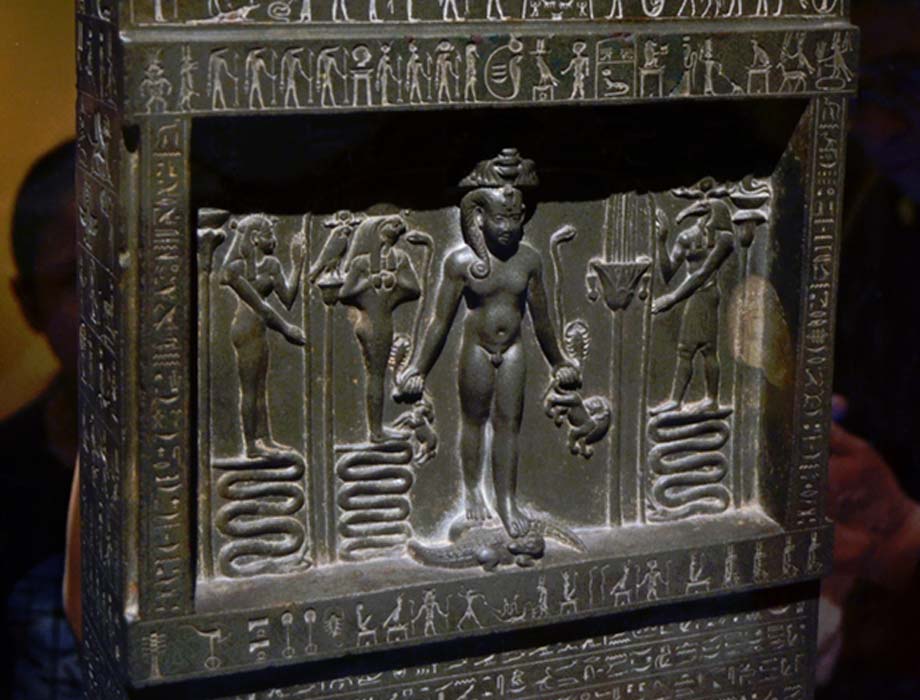Ancients - Curses and Cures: The Magic and Medicine Found on the Spectacular Metternich Stela
The Metternich stela is one of the most remarkable stelae related to magic and medicine in ancient Egypt. The text carved in the stone from the 30th dynasty is a fascinating source of forgotten spells and provides solutions to many health problems – especially those linked to poisoning.
It is known that the Metternich stela was created during the reign of Nectanebo II, the last Egyptian pharaoh, however other details related to the origins of the artifact remain unknown. It is a part of a group of stelae known as ''Cippus of Horus''- a collection of stelae used to protect people from dangers like snake or crocodile attacks. However, this particular stela is one of the largest of its kind. It also has some of the best-preserved magical text from its time.

Cippus of Horus stela. (Public Domain)
A Traveling Stone
It is believed that the priest Esatum traveled to Heliopolis and saw some inscriptions that were very interesting for him. As a person who knew how to write, he copied the texts and ordered they be carved on a huge stone block. When Alexander the Great built the city of Alexandria, this large block of text was also brought to the new capital. It was later found in 1828 at a Franciscan monastery. The stone was then sold to Prince Metternich by the ruler of Egypt, Muhammad Ali Pasha. Following this, it was taken to Kynzvart Castle in Bohemia, where it remained for the next few decades. But by 1950 it was sold to the Metropolitan Museum of Art in New York.
- The Monumental Temple of Hibis: Memories of Glory Days by the Last Egyptian Pharaoh of Kemet
- Archaeologists Discover a Resting Place for an Ancient Egyptian Sacred Boat
Curses and Cures on One Stone
The stela is made of greywacke and it is in such good condition that there are only a few almost invisible chips found on it today. It was created with the care and precision that was characteristic of the best times in ancient Egyptian history. A symbol of Ra, the Egyptian god of the sun, is located on top of the artifact as a disk. Four baboons were placed on each of Ra’s sides – these were the messengers of the god Thoth. The relief also has a representation of the pharaoh Nectanebo II. The central part of the stela is filled with five lines of hieroglyphic inscriptions about Horus and the dwarf god Bes (who was a protector of households, families, and newborn babies.)

Metropolitan Museum of Art - Metternich Stela. (CC BY-NC-ND 2.0)
The lower part of the stela is decorated with symbolism of Horus and Ra. The left relief is connected to Isis, who stands on a serpent, while the right is dedicated to the god Thoth, who also stands on another serpent. An eye of Horus is depicted above each of them. Finally, the reverse side of the stela is decorated with the demonic solar god Harmeti, who is represented as a winged man. According to Norah E. Scott:
''The first register of the Metternich Stela is a sort of introduction to the rest of the monument. The disk of the sun, containing a winged figure of one of the forms of Re, the supreme god of northern Egypt and the "Great Magician," is supported on the signs for water, earth, and air; Re' has four heads which are turned towards the north, south, east, and west. This symbol is worshiped by eight baboons and by Thot, the messenger of Re' and god of wisdom and writing (at the left), and the reigning pharaoh, Nectanebo II (at the right). The short inscriptions praise Re and states "Thot comes, equipped with magic, to exorcise poison," and give the king's prayer that Re may keep him safe from the heat of the sun. (The king's name appears again on the upper surface of the base, in the small spaces at the sides of the stela proper.) Below, on the left and right of the main relief-the Child Horus triumphant-are two further short recitations. That on the left is uttered by the goddess Isis, "Fear not, fear not, my son Horus, I am around thee as thy protection, I keep every evil far from thee and from everyone who suffers likewise." On the right Thot again speaks, "I have come from heaven at the command of Re' to protect thee on thy bed every day, and everyone who suffers likewise."

Drawing of the stela. (Public Domain)
The stela has magical recipes to heal poisons, mostly animal poisons. Legends also say the stela itself has magical powers. Ancient doctors would pour water over the stela and collect it to give it to a person who had been poisoned. The spells discuss different animals, but they especially focus on cats and reptiles. Cats were believed to be animals of gods and goddesses, so they were thought to have the ability to heal every poison. The spell against reptile poison was connected to the serpent demon Apophis. It was thought to force the serpent to vomit when the priest was chanting the spell. At that point the sick person would also vomit - relieving him or herself of the poison. The stela also describes some stories related to deities. In fact, most of the text is dedicated to the story of Horus - who was poisoned but cured.
- Agesilaus II, King of Sparta and Commander of Warriors
- Surprising Discovery of Metal Hooks in The Solar Boat of Egyptian Pharaoh Khufu

Atum and the snake Apophis. (Public Domain)
The Reality of Ancient Magic
Did it work? Some people still believe that ancient Egyptian magic is powerful and that texts like those on the Metternich stela represent much more than a religious ritual. Magical texts and ancient rituals were often also a part of medical treatments in the ancient world. For the ancients, medicine was thought to be reinforced by magical powers.

No comments:
Post a Comment